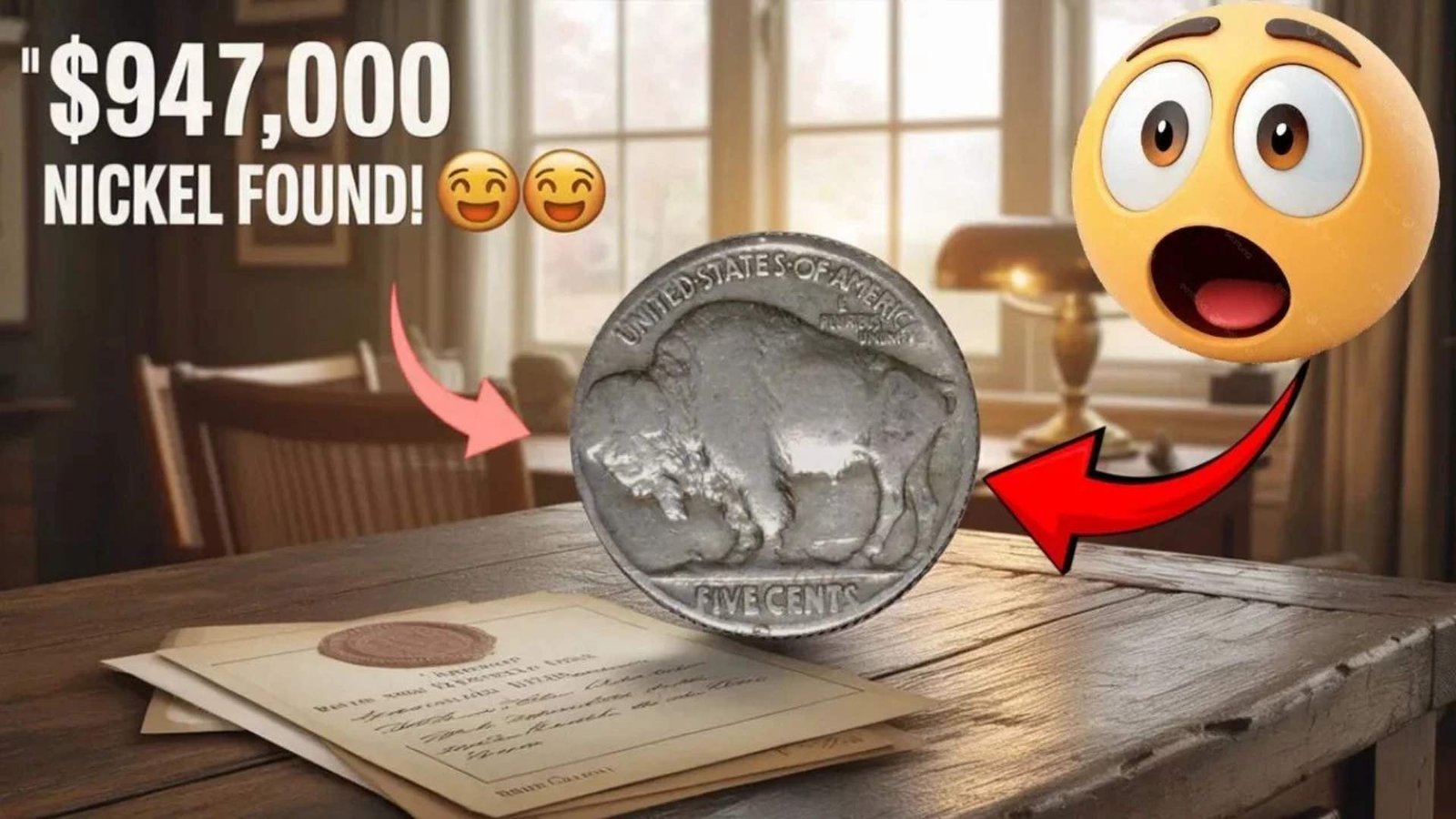Imagine stumbling upon a small, worn coin in an old inherited box only to learn it’s worth nearly $947,000. That’s exactly what happened when a mysterious Buffalo Nickel without a date surfaced, sending shockwaves through the coin collecting world. Could a simple coin hiding in your drawer be the next jackpot?
What Exactly Is the $947,000 Buffalo Nickel Without Date?
The Buffalo Nickel, also known as the Indian Head Nickel, was minted between 1913 and 1938. It features a Native American on the obverse and a buffalo on the reverse. Most nickels from this era are worth only a few dollars, but rare error versions or unique no-date varieties can command staggering sums. The recently discovered dateless Buffalo Nickel stands apart because of its unmatched rarity and pristine condition.
A Surprising History of the Buffalo Nickel
The Buffalo Nickel’s story begins in 1913 when it replaced the Liberty Head Nickel. Designed by James Earle Fraser, it was meant to celebrate American heritage and the western frontier. The coin became famous not just for its artwork but for its quirks. The date on the coin was placed on a raised surface, causing it to wear off quickly during circulation. This design flaw led to thousands of no-date Buffalo Nickels, but only a handful are linked to ultra-rare mint errors or special strikes that can reach six-figure values.
Why Is This Coin Worth $947,000 Today?
While millions of Buffalo Nickels exist, only a few error versions are considered true treasures. The newly uncovered no-date Buffalo Nickel stunned experts because of a perfect storm of features: an unusual mint strike, incredible condition, and extremely low survival numbers. For collectors, this coin isn’t just money—it’s history in metal form.
Why Some Buffalo Nickels Are Extremely Valuable
| Type | Estimated Value | Why Valuable |
|---|---|---|
| Common Buffalo Nickel (No Date) | $1 – $5 | Heavy wear, no rarity |
| 1913 Type 1 Buffalo Nickel | $50 – $300 | First year issue |
| 1916 Doubled Die Obverse | $3,000 – $15,000 | Rare minting error |
| 1937-D 3-Legged Buffalo | $40,000 – $150,000 | Famous mint error |
| Special No-Date Discovery (Inherited Collection) | Up to $947,000 | Unique rarity + pristine strike |
How Can You Spot One in Your Own Collection?
If you’ve inherited a coin jar or old album, you might unknowingly be sitting on a fortune. Here’s what to check:
- Look for unusual strike marks or faint date traces.
- Weigh the coin—rare errors sometimes deviate from standard weights.
- Seek professional grading through services like PCGS or NGC.
- Don’t clean the coin—original patina adds to its value.
Steps to Identify a Rare Buffalo Nickel
| Step | Action | Why It Matters |
|---|---|---|
| 1 | Examine with magnifying glass | Spot mint errors or details |
| 2 | Check weight (5 grams normal) | Deviations suggest rarity |
| 3 | Look for missing legs or doubled die | Known valuable errors |
| 4 | Verify authenticity via grading | Confirms condition & rarity |
| 5 | Compare auction records | Estimate potential value |
Notable Facts That Shock Collectors
- The Buffalo Nickel series is one of the most collected U.S. coins.
- Some no-date versions are actually more valuable than dated coins.
- Auction houses have seen bidding wars skyrocket past $500,000.
- The design was so loved it reappeared in 2001 on modern commemoratives.
Expert Insights and Tips
Coin experts recommend never overlooking a dateless nickel. Many people dismiss them as worthless pocket change, but under the right circumstances, they can become once-in-a-lifetime discoveries. If you find one, the best advice is to get it appraised before selling. Even a worn coin might surprise you.
Frequently Asked Questions
Q: Are all no-date Buffalo Nickels valuable?
No, most are common and worth only a few dollars, but rare error types can be worth thousands—or even close to a million.
Q: How do I know if mine is special?
Look for unique features, weight differences, or have it graded by a professional coin service.
Q: Should I clean my Buffalo Nickel before selling?
Absolutely not. Cleaning reduces value dramatically. Always keep coins in their original state.
Conclusion
The discovery of a $947,000 Buffalo Nickel without a date proves that treasures can be hiding in plain sight. What looks like an ordinary coin may hold a fortune, waiting to be recognized. If you have an inherited collection, now’s the time to check—your next financial windfall might be jingling at the bottom of an old coin jar.




